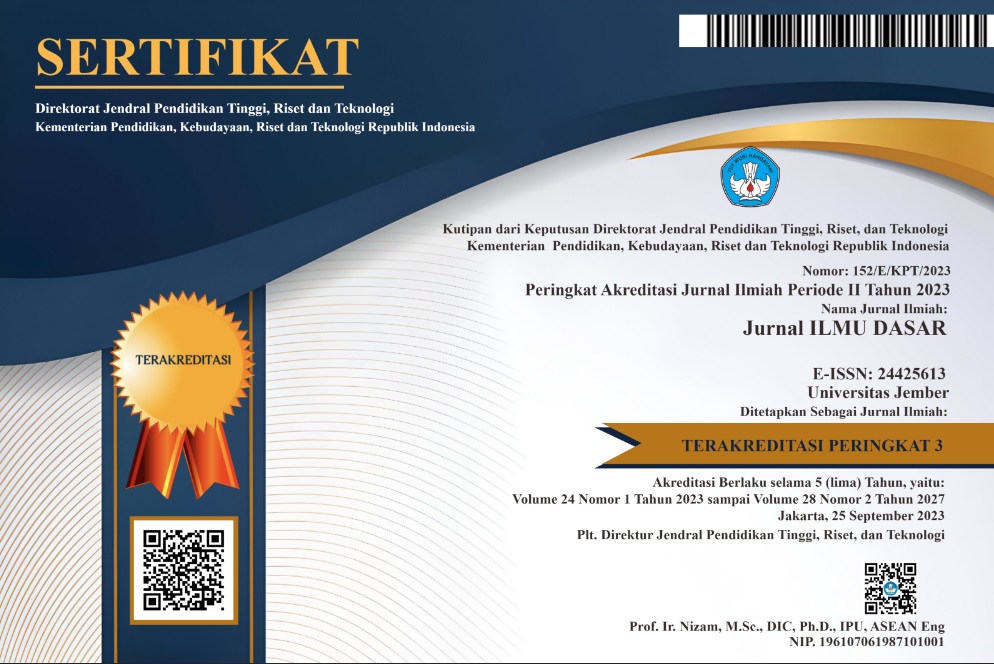Functionalization of Polyethylene Films With pH-Responsive Acrylic Acid Using Grafting Technique Induced by UV-Ray
Keywords:
photografting, polyethylene film, functional polymer, acrylic acid, pH-responsive characters, graft copolymersAbstract
This research was carried out to study photografting of acrylic acid onto linear low-density polyethylene (LLDPE) film, induced by UV ray at 60°C, as a function of monomer concentration and irradiation time. This research was conducted since it has been known that hydrogels formed by polyacrylic acid exhibit shrinking and swelling behaviors according to the change in pH of the aqueous medium. Therefore, the acrylic acid-grafted LLDPE film is expected to exhibit a pH-responsive function, in which it swells in alkaline media (pH = 8) and shrinks in acidic media (pH = 4). Xanthone was used as a photoinitiator, which was coated on the film earlier. The samples were characterized using attenuated total reflection infrared spectroscopy and a scanning electron microscope analysis. The pH-responsive experiments revealed that the samples exhibited the pH-responsive characters, as expected, in which they shrank and swelled in acidic and alkaline media, respectively. The pHresponsive character was higher for the samples prepared in the system containing monomer at higher concentration. The different extents of the pH-responsive character of the resulting grafted PE films were discussed in terms of location of grafted chains in the film substrate.
Downloads
Download data is not yet available.







